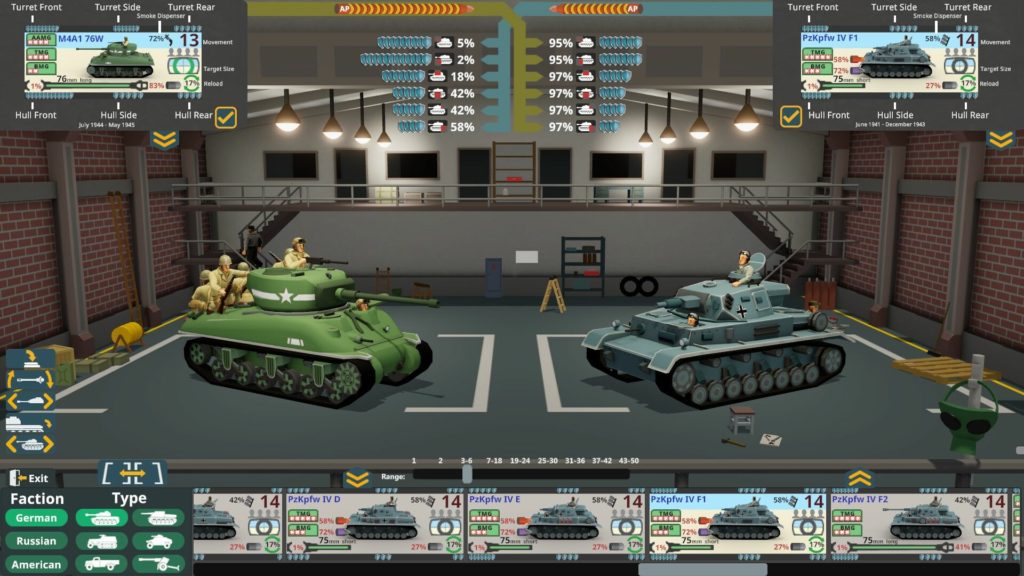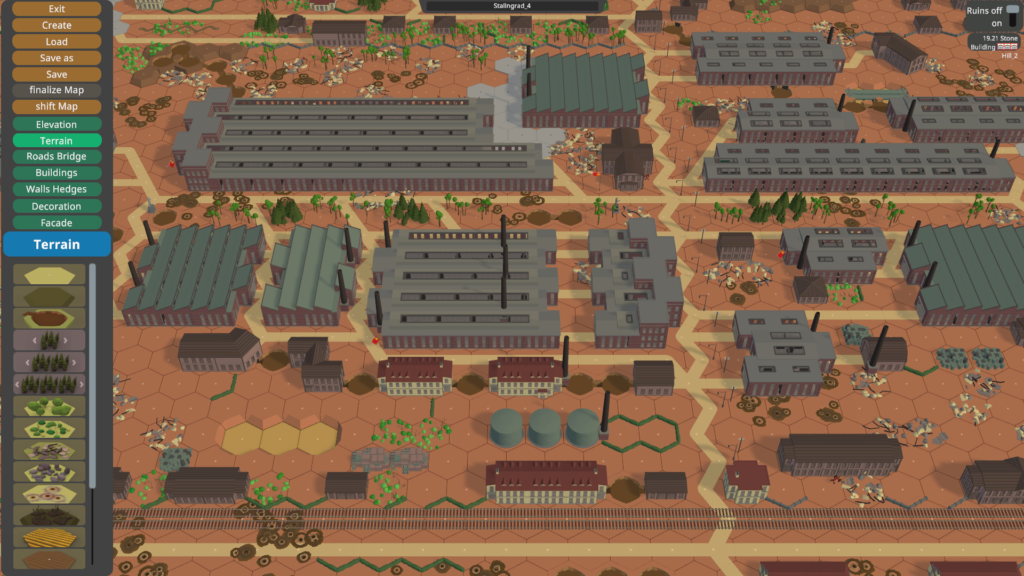
SECOND FRONT
A NEW SQuAD-level competitor enters the fray
Squad-level tactical games are relatively plentiful – perhaps more on the tabletop side of the wargaming arena than the PC, but there are a decent number of PC choices as well. MicroProse has entered the fray with a brand-new competitor that hews close to the traditional strengths of the genre as played on the tabletop. That it also nicely leverages the strengths of the PC platform is what makes “Second Front” such an intriguing entry.
The blurb for the game on the MicroProse website does a good job of summarizing just what this game is all about, and the main question you probably would like answered is simple: is the blurb (below) hyperbole, or has designer/developer Jo Bader pulled it off?
Second Front is an accessible WWII turn-based tactical game with more than 40 infantry units and 200 tanks, vehicles and guns. It has all the depth of a paper wargame and the ease of a computer simulation. Campaign, scenarios and a complete editor make it an infinite tactical sandbox experience.
(MicroProse.com)
Second Front on the MicroProse website

GAMEPLAY
If you’re familiar with tactical wargames on the tabletop (and digital adaptations thereof) then the core gameplay of Second Front is going to be akin to meeting an old friend. The game is an IGOUGO system broken into phases – a system that has been at the core of many tactical wargames going back to the 1980s if not earlier. The phases are:
- Move & Fire Phase
- Enemy Fire Phase
- Escape Phase
- Advance Phase
- Melee Phase
- Recovery Phase
The names might be a little different, but the mechanics will feel like comfy old slippers to grognards. The first phase allows you (and then the AI-controlled enemy) to move, move and fire, or fire. The enemy will be able to take opportunity fire if you enter their line of sight (LOS). See? Familiar territory, and well-implemented here (you’ll be seeing that phrase a lot). The Enemy Fire phase allows you (or the AI) who can still fire (having not taken opportunity shots in the previous phase) may do so, firing at any units in LOS. No movement takes place during this phase. The Escape Phase is automatic – basically any units who have been broken by enemy fire will take this opportunity to run for the hills – and be subject to opportunity fire while doing so. If they can not run & hide they will surrender. The advance phase is also a familiar one from other tactical games: the phasing player’s infantry can move one hex (vehicles can not do this) and by doing so, initiate close combat (aka melee). The melee phase resolves the combat that results from the advance phase placing opposing forces in the same hex. Finally, the recovery phase allows leaders to rally their troops (or, at least attempt to do so), units with broken weapons/vehicles to repair them, etc. This ends the phasing player’s turn and if they are going first, the turn continues with the opposition’s turn – otherwise a new turn is begun.
The learning curve on this game will likely vary based on the player’s experience with tactical games. Because real-life tactics work: find your enemy (some of them will be hidden), fix him by fire, close in and assault. That’s easier said than done, of course, but that’s true of every competent tactical game out there. The game presents a lot of information to the player and understanding all of that, and how it impacts the chances of success for your actions, is probably where the biggest learning curve will come.
Luckily the game comes with a series of 12 infantry and 7 vehicle-specific tutorial scenarios which do an excellent job of giving the player the needed background on how things work in the game. After that, you can fight through the 48 stock scenarios covering battles of American forces vs German forces, Russian forces vs the Germans and vice-versa (12 each of US vs Germany, USSR vs Germany and Germany vs each of the Allied forces). The British, the Commonwealth forces, the French, Italians and all the other combatants are not present in the game, leaving plenty of room for future expansions.
The included scenarios unlock as you win them – at start you will have access to the first two scenarios for each matchup (8 in all). As you win those, more will be unlocked until eventually all 48 are available. There are also five campaigns included, which are a series of linked scenarios. You unlock those as well by winning specific sets of the 48 scenarios. The areas covered vary from Barbarossa’s early days, to combat in Italy by the US 5th Army, to D-Day, Stalingrad, Berlin and more. There is a ton of content in the base game – and with the Steam workshop, even more is available thanks to the game’s built-in map, scenario and campaign editor.

A TACTICAL SANDBOX
The editing capabilities in this game are excellent. It includes a wide variety or terrain (with various elevations), roads, bridges and railroads, buildings (over 140 varieties of building tiles), walls, hedges, flags, statues, signs and even period posters you can stick on walls. This may appeal to those who enjoy tabletop miniatures as it really captures that feeling of building out the battlefield for specific campaigns or scenarios. And it all works very well, both at the design level and in gameplay.
At the time I’m writing this, the game has not yet released and there are already over 40 scenarios on the Steam Workshop for the game as the content creators are already hard at work adding even more gameplay.
I would like to note here that the game’s aesthetic is very nice. You can zoom in and look inside buildings, or get super close to the units and see the individual soldiers. It’s a very cool feature.

BOTTOM LINE – IS IT ON TARGET?
MicroProse really has a winner here. This game has everything you’d want from a tactical wargame, particularly if you enjoy a tabletop-like experience. From the hex-based map to the line of sight rules, to the variety of terrain and cover effects and the letter-perfect implementation of the various vehicles and weapons, Second Front really hits on all levels. The graphics are nice and helps reinforce that tabletop miniatures aesthetic. The game also leverages the power of the PC to make it all work. I played well over 30 hours before writing this review and experienced no crashes and no bugs or glitches either. This is an extremely well-designed and well-implemented wargame.
Unsurprisingly based on the paragraph above, this one is a definite recommend from me. If you enjoy wargames, this game is an outstanding addition to the genre.
ReLATED Videos
Video Series
Second Front
Videos on the PC game “Second Front” from MicroProse
For full playlist, visit the Hexed & Countered YouTube channel here